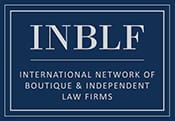Updating nanotech a little
May, 2015
Eric F. Greenberg | Attorney-at-Law
The still-emerging science of nanotechnology is especially relevant to packagers because many early adoptions of this exciting new technology are for packaging and food uses. “Nanotechnology” refers to the intentional engineering of substances into particles of 100 nanometers or smaller (though definitions vary).
When you intentionally make particles very small, they can perform differently than the same substance in traditional-sized particles. All masses being equal, there is more surface area on the nano particle than on the larger particle, which can affect chemical and physical properties. That can be great news for engineers trying to use familiar substances to make a thinner coating or a stronger substrate. The big questions are whether the nano-scale version is the same substance as its traditionally sized counterpart, and whether it’s comparably safe.
Right now, scientists are not yet able to say in advance which nano-versions of traditional chemicals will be more safe, less safe, or behave differently. For that reason, government regulators have been puzzling over how to address nanotechnology and have provided some important guidance and perspective.
In March 2015, a group of NGOs including Food and Water Watch and the Environmental Working Group issued a series of recommendations to be implemented by companies that use engineered nanomaterials in packaging and food. They recommended that each company add a label statement disclosing the presence of any nanomaterials of 500 nm or below in its packaging, or in a food or beverage.
The groups also want each company to provide online the scientific substantiation of the particles’ safety. They called for each company to disclose to the public its specific “practices regarding the use of nanomaterials in its food and beverage products and packaging,” get buy-in to that policy from suppliers, and implement worker safety controls.
These requests are inspired by the groups’ safety concerns about nanotechnology. While the safety of the technology is certainly worth examining, these burdensome proposals seem to be going much too far. It also appears they are framing the safety issue misleadingly to help garner support for their proposals. To see how, let’s first review some facts about substances in packaging and food.
Food packaging makers and their food company customers are required by law to take steps to assure that the substances they put into food or that might migrate to food are safe, and that applies to engineered nanomaterials as surely as any other. These companies are further required to assure that the substances and foods are made accurately and consistently, without cross-contamination by other substances. As for food packaging materials, the makers and users are legally obligated to assure that they are safe and have FDA clearance permitting the specific uses they put them to. The companies are subject to seizure, injunction, loss of their facility registration, product embargo, and criminal prosecution if they fail in these obligations.
So what do the consumer groups call nanomaterials used in food? “Unregulated.” Their policy recommendation begins, “Responding to rising concern about manufacturers using unregulated nanomaterials in food, a coalition of advocacy groups in the U.S. and abroad has released a policy recommendation for companies in food-related industries….”
I hate to be persnickety (no I don’t, really), but please don’t say something’s “unregulated” when it is regulated.
It’s true that nanomaterials as such are not required to be reviewed and approved by FDA before they go to market, and their presence is not required to be disclosed on labels. But it’s harder to have a rational discussion when the NGOs claim these substances are unregulated, implying there are no controls whatsoever on them and o my goodness we better do everything we can to make life harder for these substances.
Also, as it happens, FDA has told us what it thinks about engineered nanomaterials in food and packaging. A guidance document from June of last year “alerts manufacturers to the potential impact of any significant manufacturing process change, including changes involving nanotechnology, on the safety and regulatory status of food substances.” It also gave companies criteria for judging whether such a change “affects the identity, safety or regulatory status of the use.” If the substances have new properties, FDA notes, the agency thinks you might need more or different tests to determine their safety.
FDA says that when it comes to food contact substances, it has already advised submitters of Food Contact Notifications to “discuss the relevance of particle size in submitting safety assessments,” and that at least 2 FCNs FDA has cleared encompass food contact substances with nanoscale particles.
In other news, regulators recently said that if you use engineered nanoscale materials in food, the question of whether or not you can label the food as organic will need to be evaluated on a case-by-case basis.
The Environmental Protection Agency, through its National Organic Program, sets the rules for how foods can be grown, handled and processed if they want to assert that they are “organic.” Noting that, “The NOP does not consider nanotechnology to be intrinsically benign or harmful,” EPA said no engineered nanomaterial will be allowed for use unless it’s been added to the National List of permitted substances after a petition has been submitted, the National Organic Standards Board has reviewed and recommended it, and the addition has been the subject of notice-and-comment rulemaking.
While it’s not certain what’s coming next for the public debate over nanotechnology, it’s certain that we’ll have more to talk about in coming years. PW
Eric Greenberg can be reached at [email protected], or visit his firm’s Web site at www.ericfgreenbergpc.com.
This article is informational only and is not intended as, and should not be considered to be, legal advice.
Be sure to check for any updated information about the topics discussed in this article.


